WRITER WEDNESDAY: Meet sci fi novelist/comic book author PAUL J. SALAMOFF (Pt. 2)
Welcome to WRITER WEDNESDAY! This week, we’re chatting with Renaissance Man PAUL J. SALMOFF! He is a TV executive, comic book writer, sci fi novelist, AND former special effects makeup artist! So if you love comic books and sci fi like I do, this week promises to be a lot of fun!
Today features Part 2 of our two-part Q&A with Paul. (Yesterday, we learned about Paul’s work as a special effects makeup artist and his experience as a TV executive. That link is here: https://paulayoo.com/blog/?p=1063) Today, we will discuss his comic book work as well as his debut sci fi novel, THE SILENT PLANET/Tavin Press 2011).
CONTEST ALERT! And we’re also featuring yes, another signed book contest drawing! Please comment on this blog or email me at paula at paulayoo dot com to be included in our drawing for signed copies of ON THE SET and SILENT PLANET! The winner will be announced on our TV TUESDAY blog on November 29, 2011.
You can also find out more about Paul at his links here:
http://www.facebook.com/PaulSalamoffFanPage
(Keep reading after the jump for Pt. 1 of our Q&A with Paul J. Salamoff!)
PAUL J. SALAMOFF BIO
(Bio from http://www.paulsalamoff.com/)
It’s hard to pin down Salamoff to one particular profession. An over twenty-year veteran of the industry, he has found success as a Writer, Producer, Film Executive, Comic Book Creator, Author, and originally as a Special F/X Make-Up Artist.
Born in Natick, MA, he was raised on a healthy diet of sci-fi and horror from the age of five. After high school, he moved to California to attend film school at USC. Salamoff parlayed his obsession for genre filmmaking into a successful run as a professional Special F/X Make-Up Artist. In his years doing FX, he worked on over forty films, ten television series, and numerous commercials.
His Film and TV writing credits include THE DEAD HATE THE LIVING, THE ST. FRANCISVILLE EXPERIMENT and ALIEN SIEGE. He was recently hired to write the high-budget SINBAD: ROGUE OF MARS for Morningside Entertainment. He is also author of two non-fiction books: ON THE SET: THE HIDDEN RULES OF MOVIE MAKING ETIQUETTE and THE COMPLETE DVD BOOK: DESIGN, PRODUCTION AND MARKETING.
As a Comic Creator, Salamoff is the writer of a number of Comic Book Series including the wildly popular VINCENT PRICE PRESENTS, ROGER CORMAN PRESENTS BLACK SCORPION, PUPPY POWER: BO OBAMA and the critically acclaimed LOGAN’S RUN: LAST DAY and LOGAN’S RUN: AFTERMATH both written with William F. Nolan.
In 2005 Salamoff became Vice President of Production for David Lancaster Productions working on WES CRAVEN’S THE BREED and HOLLOW MAN 2. After a successful merge with BOLD Films, he became their Vice President of Production and worked on such films as LEGION, BOBBY and STARSHIP TROOPERS: MARAUDER. After leaving Bold, he accepted the position of President of Production for Rat Bastard Productions working on the festival darling DOWN FOR LIFE.
Having been involved with THE ACADEMY OF SCIENCE FICTION, FANTASY & HORROR FILMS for over twelve years, he produced the 22nd, 23rd, 33rd, 34th and 35th Saturn Awards. Salamoff has also produced Video Game TV/Web Development videos and Trailers for G-Net Media. Working on such high-profile projects as THE ADVENTURES OF TINTIN, BULLETSTORM, MAFIA 2, MASS EFFECT 2, GEARS OF WAR 2 and DEAD SPACE.
PART 2 OF TWO-PART Q&A WITH PAUL J. SALAMOFF
— Q: You are also a versatile writer, because you write scripts AND comic books AND novels. Which came first and how did you branch out into the other areas?
— A: I like to fancy myself a storyteller and not limit myself to one type of medium. Each one whether it be scripts, books, short stories or comics have their own rules which keeps me on my toes.
I started out as a screenwriter because I’ve been obsessed with movies from a young age and my ultimate goal was to see my stories imagined on the screen. That hasn’t waned but as I delve deeper and deeper especially into graphic novels and novels I have grown more at peace with the idea that certain stories will only live in certain mediums.
That’s not to say that any of my stories wouldn’t work in a number of mediums, but like I said they are all different animals and the stories have to be reworked to fit in different formats.
My project THE SILENT PLANET is a screenplay, graphic novel and novel and they all handle the material in their own way.
— Q: Please tell us more about your comic book series creations – you not only write the Logan’s Run and Vincent Price Presents series, but you also just released your first original graphic novel DISCORD.
— A: I could not be more proud of DISCORD and the reception is has been getting. I wanted to tell a new and emotionally compelling superhero story that took recognizable tropes and turned them on their ear. The response has been overwhelmingly positive with one reviewer comparing it to WATCHMEN (I was floored).
For those unfamiliar with DISCORD, it’s the story of a popular superhero team called Team War Hammer, who crash-land on an alien planet while fighting their enemy Sinew. They’re all killed. Body parts scattered everywhere. The benevolent alien lifeforms on the planet find the body parts and reassemble and resurrect what they think is a human.
So the main character, CHROMATIC, wakes up to discover that he is not only made up of his fallen teammates but also his enemy. The story deals with the ramifications of this and the emotional fallout. It’s told in a very adult way but in the guise of a 90’s style superhero adventure.
— Q: How did you come up with the idea for DISCORD? Why did you think it would be a perfect ideas for a graphic novel?
— A: I don’t exactly remember where the germ for DISCORD came from but I had the desire to tell an unconventional superhero story. I think I had the Frankenstein-ian image in my head: the idea of a superhero that was made up of other superheroes. And I wanted him to be the good guy!
But I was convinced that must have been done before, so I called around to my friends who would know and they said there was nothing like I was proposing.
So that got me excited and I started developing the themes I could explore. Such as “Loss of identity and self” (I’m a big David Cronenberg fan, so I like that theme). Also being “defined by one’s powers”. If you had one power and it was a more defensive power, but now you had many powers and they were mainly offensive powers how would that change you. I also liked the idea that “you don’t need to be a hero to step up and do the right thing”.
Because DISCORD lent itself to a large tapestry of ideas plus trying to make a movie about Superheroes that are unfamiliar to the general public, doing it as a graphic novel seemed ideal.
— Q: How involved are you in the artwork? Because there is an artist, do you focus less on the visuals? What’s the give and take relationship between writer and artist for these types of books?
— A: I approach every comic I work on as a partnership with the artist and me. We have to be on the same page on the intent but with that said, I completely trust my artists to work their magic on my story and so far I haven’t been let down yet.
My scripts are usually over descriptive and I try to do a lot of the heavy lifting, so the artist can just concentrate on the art instead of trying to figure out vague descriptions or intentions.
However, I always tell them that it is simply a roadmap for them. If they feel they can convey the ideas on the page with fewer or more panels than they have free reign to do that. I am not an artist. I don’t claim to be one, so I leave that to the professionals.
Some artists follow my scripts to the letter while others will be a little more fluid with it. Either way works for me because 9 times out of 10 when I get a new page to see, I am blown away.
Look, there is no surprise here, when I say that it’s far easier for me to write the script than for the artist to draw it. Something that takes me days to do can take them weeks if not months to draw. So I feel that it is disrespectful to micro-manage them or push my agenda. Like I said, it’s a partnership and at the end of the day the finished project is our shared vision.
My job is to be the cheerleader and encourage them to weather the long journey and it’s much more fun when you’re on that journey together.
— Q: Let’s talk about your new novel THE SILENT PLANET. How did you come up with the idea?
— A: I am a big fan of Stanislaw Lem and especially his book Solaris. I like exploring the human condition especially through the genres of horror and science fiction.
At that point in my writing career I hadn’t written anything big or epic and I really wanted to see if I had it in me.
I like the idea of hubris. That we as a species can be so arrogant to believe that we can understand and figure out everything.
I also find it fascinating how we tend to anthropomorphize things and give human attributes to these things we don’t fully grasp. I thought combining those two themes could generate and interesting story given the right catalyst.
So that catalyst, that playground I devised to explore these themes was a planet that was filled with organisms and vegetation that were truly beyond human comprehension.
A corporation had purchased this planet called Vega Prime to see what value that could suck from it but the creatures and vegetation that inhabited the planet were making it difficult if not impossible.
So they’ve had a science team living on Vega Prime to figure it all out. Categorize everything and get a sense of the big picture.
But, I didn’t want this to be a biological drama or an esoteric exploration of the themes, so instead of focusing on the science team, I decided that the protagonists would be the highly dysfunctional crew of the Magellan, the ship that drops off supplies to the science team every few months.
After 6 years of the same old same old, they show up on Vega Prime to discover that the science team has inexplicably disappeared. Even though they are not search and rescue (nor have they ever step foot off the Magellan), they are forced by the corporation to unravel the mystery.
So ultimately the Magellan crew turn this potentially non-hostile environment very hostile due to their human foibles and it’s all in the guise of a rollicking adventure story in the tradition of Jurassic park and, well Avatar (which probably wasn’t even a glimmer in James Cameron’s eye when I originally wrote The Silent Planet).
— Q: What made you want to write a novel?
— A: The Silent Planet began its life as a screenplay, but when I wrote it almost a decade ago, it was not really possible to realize a film of this magnitude. Now with the advancements in CGI and other FX, this movie makes a lot of sense to make.
It wound up being optioned as a graphic novel by the French company Humanoids unfortunately they never hired an artist and eventually gave the project back to me after the Exec who brought it in left the company.
Out of all my scripts, The Silent Planet has been my favorite, not because it’s necessarily the best of them but because I really had something to say with it and it was the kind of story that really inspires me. It’s full of wonder and hope as well as adventure.
I had already written 2 non-fiction books and when the writer’s strike hit I figured well, now’s the time to try my hand at a novel, if I’m ever going to. I decided that The Silent Planet would be the best novel to attempt because I knew and loved the material plus there was so much backstory that is not told in the script that it seemed like a no brainer.
I finished most of the book, but then had to get back to work to pay the bills so it sat in a drawer for quite some time.
— Q: Do you have any influences from the world of books – favorite authors or books? How long did it take to write the novel? Was it difficult to shift gears into novel writing? How did your script and comic book writing skills help you in the transition?
— A: I obviously have my own voice as a writer but I was heavily influenced by Stanislaw Lem, Kurt Vonnegut and Douglas Adams. So even though The Silent Planet deals with some heady stuff there is still a sly subtle sense of humor that permeates the story.
The hardest aspect of writing the novel was shifting tense. Scripts are written in present tense while books tend to be past tense. That was a constant struggle. Also training myself to take my time with the material and especially the characters. I would forget at times that I had the luxury to delve deeper into backstory as well as the character’s thoughts and feelings. That took time to adjust to.
Having the screenplay to work off of had it’s pros and cons because on one hand a lot of the work had been done because my screenplay action is pretty visceral to begin with, but on the flip side because of the tense issue, sentences had to be re-written from scratch any way. So it made for more work at times.
— Q: How much research did you do for creating the world of Vega Prime? For example, you describe the history of Vega Prime’s “no fly zones” and the controversial theories around their dampening fields. How much “real science” research made it into your novel?
A: If I’m going to be completely honest, not a lot of real science was researched when I wrote the screenplay or the novel. Even though I am fascinated by science and watch documentaries there was no conscious attempt to hunker down and make sure things were scientifically sound.
I fortunately know and comprehend a lot about science but a good portion of that is also mixed with “Movie Science”.
My litmus test is very simple: Would I believe this concept, if I saw it in a movie or read it in a book.
I know that’s a cop out answer but I rarely do research for my scripts and to this day (other than one idea I came up with for a SyFy channel movie) have I ever been called out for shotty science.
— Q: Like any good sci fi novel, it’s not just about the sci fi action and plot. It’s also about strong characters with interesting flaws. Which crew member of the Magellan is the most like you? Were any of the characters, from Harker to Samara to Virgin to Takashi, based on real life friends or people that you knew?
— A: This is always and intriguing question. It’s similar to “do you write with Actors in mind”. The answer to both is that to me I create my characters organically. Other than maybe using names of friends, I’ve very rarely (if ever) have written a character that was inspired by a real living person.
And in regards to being influenced by what makes me tick, I would be hard-pressed to say I have done that as well. Other than maybe on a subconscious level.
My most personal script is a comedy I wrote called “…It’s a Girl?!” which is about a husband and wife who find out that their new baby is going to be a girl. The husband is terrified about having a daughter for all the cliché’ reasons but he’s afraid to tell his wife because he doesn’t want her to think that he doesn’t want a daughter. The main character, Jason, certainly shared my concerns and this was a sort of cathartic way to work out my anxieties about having a daughter, but he wasn’t me by any stretch of the imagination.
— Q: It was fun to read the very visceral descriptions – I was wondering if your makeup experience had any influence on how you described the alien life forms on Vega. 🙂
— A: I think I have a very active imagination, so I’m inspired by just about everything. So the quick answer is yes, in some respects my background in Make-Up FX had some influence but I was equally inspired by creatures I’ve seen in movies or in books.
— Q: Is there any chance of this book becoming a future movie or TV script as well? I could totally see this onscreen.
— A: One of the reasons I dusted off the manuscript and went back into high gear to get it finished and published was that my incredible new Manager Kailey Marsh had been reading through my library of scripts to get a sense of me as a client and nearly blew a gasket when she stumbled across The Silent Planet.
She was obsessed with it especially because she found it a very emotionally charged screenplay for a big sci-fi epic (she cried at the end).
She had me do a new draft of the script to update it and clean it up and she started sending it out to a very select group of executives. The response was immediate and good and there is already real interest in making it into a movie at a studio.
— Q: Will there be a sequel?
— A: Hmmmm….I don’t know if it warrants a sequel. There are definitely more stories to tell and a universe of possibilities, but when you read it you will see that the emotional arc of the story really makes a definitive trajectory.
I do love the characters and would definitely like to see what happens to them after the events of The Silent Planet but the original intent was to tell a complete story and end with a sense of hopeful uncertainty. Sort of like the end of Stephen King’s The Shawshank Redemption where even though you don’t see Red reunited with Andy, you know in your soul that it’s an inevitability.
— Q: Where do you like to write? At home, in an office, at a fun coffeehouse? Do you write longhand or with a computer at first?
— A: I have a very specific writing process that has really done me well over my decade of writing.
Once I have the nugget of an idea I just think about it and sculpt the story in my head as if I was watching a movie. This is easiest when I crawl into bed at night. When the lights go off the movie screen in my head shows me the idea in full IMAX glory.
Every night the movie gets longer and longer with more and more detail.
As soon as it has for the most part, gelled in my head, I sit down with a pad of paper and a pen and beat out the entire film. I can literally (pun intended) do that in just an hour or two.
Then I have my roadmap.
I do all my writing on my desktop iMac where I am surrounded by plenty of reference books and shelves full of action figures and toys (mostly from Doctor Who). My desk is 100% free from clutter this way I can focus on writing.
Because of this process, I very rarely if ever get writer’s block and I’m never fearful of the blank page. It’s because I already know what I’m writing. Yes, there may be major overhauls in structure or discoveries along the way, but the movie is running in my head, so it’s more akin to transposing what I’m watching in my head than writing something from scratch.
— Q: What advice would you give aspiring comic book writers?
— A: The sad reality is that there is really not a lot of money in the comic business, especially for writers. I write comics because I have a passion for it and I get to tell stories that are undiluted and express me as a storyteller.
You have to have passion.
If you’re trying to break in, I highly suggest either trying to do a comic on your own or work for companies that are willing to work with new talent. You may not get paid or only make a small amount, but at the end of the day you’ll have a physical comic with your name on the cover.
Most of my early comics were low-paying gigs but they helped to establish me as a writer worth checking out and because of those comics, it opened the door for my graphic novels and my original stories.
Also when you do get the opportunity to tell your own stories try to expand the medium and tell unique stories. I read so many comics these days that are just fluff or seem to be just marking time. Comics, unlike movies, give you limitless possibilities. You can truly explore whatever ideas you want.
Do something special that will make people stand up and take notice.
— Q: What advice would you give aspiring screenwriters and novelists?
— A: Again you MUST be passionate about what you are writing. If you’re not, stop and move onto another story. No matter what the genre, passion will always make the story come alive and engage the reader.
Find that subject that you truly connect with. A good start (and an old adage) is to write what you know.
Also don’t write for trends. You must understand that by the time your script would be in good enough shape to sell (not even be made and distributed), the trend will be waning or even over and your script may be outdated or outmoded.
It’s important to know your genre and especially what has come before it but don’t be fooled into thinking that if you mimic something successful someone will buy it. Write a good story. That’s what people like.
And finally keep in mind that there are hundreds of reasons why a great script doesn’t get made, so don’t take rejection personally. If you do it will crush you. Keep positive and trust in your abilities because believe it or not sometimes it’s just plain old luck that gives you that extra edge.
— Q: Please tell us about your other projects.
— A: I am currently preparing for the 2nd draft of SINBAD: ROGUE OF MARS, the first in a new trilogy of Sinbad movies for Morningside Entertainment.
As LOGAN’S RUN: AFTERMATH winds down with it’s last 2 issues, I have already started up LOGAN’S RUN: REBIRTH which hits shelves early next year.
I am also extremely excited to announce the expansion of the DISCORD Universe. As the sequel graphic novel is being conceived will be bridging the gap with a series of One-Shot Prequel comics based on the members of Team War Hammer.
Called “TALES OF DISCORD”, the first one to be announced is “IRIDIAN”. These are not mere origin stories; they are much more special then that. They give insight into the characters but also lay important groundwork for the DISCORD sequel.
To make this even more exciting, I will be tracing a behind the scenes journey from conception to finished and released comic book (warts and all) on my OFF•WORLD VIEW Blog. I hope you will join me for that new adventure it should be entertaining and informative.
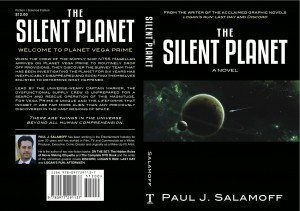
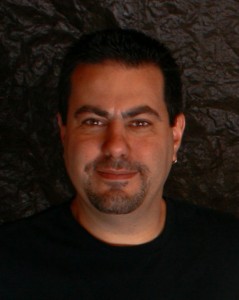
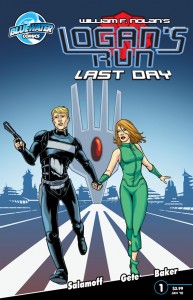
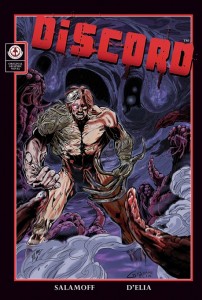
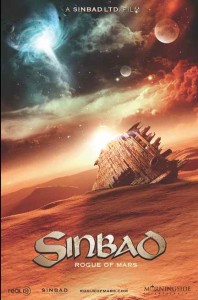
2 Responses
you are an amazing woman with amazing friends!
(Just catching up on your blog and reading backwards…LOL!)
I can’t get enough of reading about sci-fi writers and how they think. I think it’s so cool that Paul was an F/X make-up artist! And he is so right about needing passion to be in the field (writing – comics, screenplays, etc).
Thanks, Paula and Paul!
(Again, no need to enter me in the drawing…although I would not say no if you did and I won…LOL!)
Comments are closed.